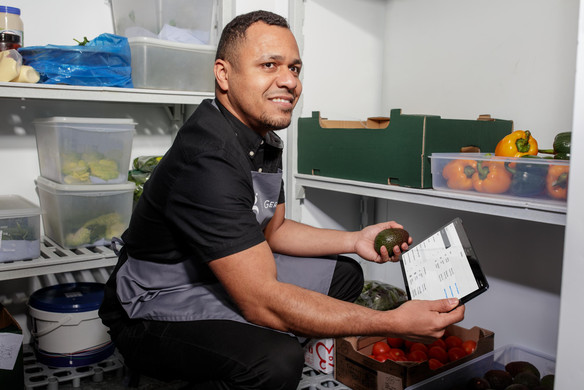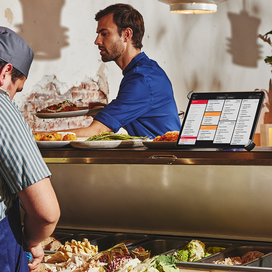Table of contents
This article is for educational purposes and does not constitute legal, financial, or tax advice. For specific advice applicable to your business, please contact a professional.
Quick-service restaurants (QSRs) are one of the fastest-growing businesses in America, with thousands of new locations opening each year. From a quick lunch to family dinners, sandwich shops in the United States alone bring in more than $45 billion in revenue annually, making them a potentially lucrative business.
Even with tens of thousands of dollars in monthly revenue, sandwich shops could be exposed to operating losses due to high ongoing costs. Without preparation and continuous monitoring, surprise expenses such as a missing operating license or a fridge replacement can create a financial struggle for you as an owner.
Knowing what you should expect to pay for from the moment you open to years to come can help you ensure your business operates efficiently and reaches long-term financial success. Keep reading to understand the total costs of opening a new sandwich shop and operating it into the future.
Initial investments: Setting up shop
Opening a new sub shop may be less expensive than a fine dining restaurant, but it’s still a substantial financial undertaking. Compared to a sit-down restaurant, which costs anywhere from around $100,000 to $2 million, opening a quick-service deli costs around $50,000.
1. Real estate and location
In real estate and the restaurant industry, “location, location, location” is an important consideration. Opening in a busy shopping center or urban location can lead to more foot traffic and higher rent or mortgage costs. On the flip side, the savings of opening in a lower-cost location can lead to lower sales.
Restaurant size and kitchen size also influence costs dramatically. A larger location can potentially accommodate more sales volume and add the option for more customer seating, but you’ll pay more for every square foot.
2. Equipment and inventory
Slicers and deli counters make sandwich shops less expensive to open than full-service restaurants. Typical equipment costs are around $10,000 to $15,000, though some larger shops or shops with hot sandwiches spend around $25,000. Cold storage, grills, prep tables, and utensils add to the bills.
Initial inventory costs are usually around $1,500 to over $5,000 for bread, meat, cheese, veggies, condiments, chips, cookies, beverages, and other supplies.
Additionally, a point-of-sale system, a kitchen display system, and self-ordering kiosks are all worthwhile considerations to ensure you’re able to take orders and that your kitchen crew members can fulfill them with ease.
All together, initial costs for equipment and inventory can range from around $11,500 to $30,000.
3. Licenses and permits
Licenses and permits vary by state and municipality. Restaurants typically need health permits, food service licenses, sales tax permits, and registration with the Secretary of State as an LLC or corporation. You may also need safety permits from the local fire department. All in, these licenses and permits can cost anywhere from a few hundred to several thousand dollars annually, starting when you open.
If you want to sell beer, wine, or spirits, plan on additional costs for a liquor license. Again, costs vary dramatically by location. Many restaurants spend anywhere from a few hundred dollars to $30,000 for a new liquor license. In some locations, costs can reach into the six-figure range, costing up to around $300,000.
Nationwide, the average business spends around $1,500 for a liquor license. And state average costs range from $100 in Idaho to nearly $14,000 in California.
4. Staffing and training costs
Hiring and training new staff is a considerable cost before selling your first sandwich. Recruiting platforms and the time to train new staff will likely cost a few thousand dollars, with higher costs for larger restaurants employing more workers.
The basics of making a sandwich and running a cash register are easy enough to teach. Still, you’ll need to ensure your staff understands your standards, knows the menu, meets customer service guidelines, and upholds safety procedures.
Operating costs: Ongoing costs to keep under control
When the doors open, staying margin-positive is critical for all businesses. With high variable costs and potentially low margins, often around 3% to 5% for sandwich shops, keeping a close watch on costs can help you stay open while operating profitability. Use our free profitability tool to estimate your costs and profit margins as a restaurant owner.
1. Staff salaries and benefits
Full-time staff is a significant cost for all businesses. Managers and full-time employees are the backbone of your sandwich shop, providing a valuable service, but they also typically cost about 30% of the business’s revenue.
Part-time employees help you staff up during busy periods but still require the same training as full-time team members. In a tight labor market, even younger hourly employees still demand a competitive wage. The Square Payroll Index helps you understand average payroll costs for different types of employees across the U.S.
If you offer delivery, your restaurant may choose to deliver itself, and you’ll have to pay for staffing and additional delivery-related costs. Or you can use a third-party delivery service but pay additional fees for each order. Delivery apps often take about 20% of the order amount as a fee.
Jared Pool, owner of the growing GADZOOKS restaurant chain, recently shared that he prefers customers to order through their website instead of third-party apps. “We’re heavily pushing our customers to Square Websites ordering because the fees are significantly less. So we even push retail on there.”
2. Utilities and maintenance
Utilities add up, particularly when running multiple large refrigeration units and heating, cooling, and ventilation (HVAC) around the clock. Average utility costs for a sandwich shop are about $500 to $1,000 per month. Climate, business size, and local utility rates can influence your total cost.
3. Inventory costs
The average inventory cost for a sandwich is around $1.50 to $3. Using specialty ingredients and local suppliers can increase costs. Organic, gluten-free, imported, and other dietary nuances drive up costs but could make your business more desirable to customers. Depending on your location and target market, specialty offerings and high-end ingredients could be worthwhile.
If you have a soda fountain machine, your cost per beverage is typically meager, but remember, disposables, such as cups, lids, and straws, can cost more than the drink. Custom-branded cups, napkins, wrappers, and bags may cost more, but they help your brand marketing and unify the customer experience.
4. Marketing expenses
Social media ads, discounts and special offers, and partnerships with local businesses and nonprofits can boost sales but cut into margins. Spending more on marketing can increase sales and brand awareness, but spending too much can cause financial troubles.
Many sandwich shops spend up to $10,000 per month on marketing. After all, you want to be the first place a customer thinks of when they want a sub, not the competitor down the street.
How Square can help: Efficiently managing your finances
To run your business as effectively as possible, it’s vital to have a clear view of your financial results. Turning to your restaurant technology is an easy way to closely track revenue and expenses and identify areas of opportunity that can help your business become as profitable as possible.
Square for Restaurants combines payment processing, order management, and everything you need to handle an order from end to end. And the Square Dashboard provides users with access to reporting information on one central interface. You can even view information from other solutions like Square Payroll, where you can manage hourly and salaried employee wages and benefits with a single sign-on.
Making your sandwich shop a bread-winning business
From the moment you decide to open a sandwich shop, don’t lose track of startup costs and ongoing expenses. When you understand your margins, you can work toward running a single location or a growing chain of successful sandwich shops.
Whether you’re considering a new business, are deep in the planning stages, or already run a restaurant, check out these free finance tools to keep your restaurant finances moving in the right direction.
![]()













